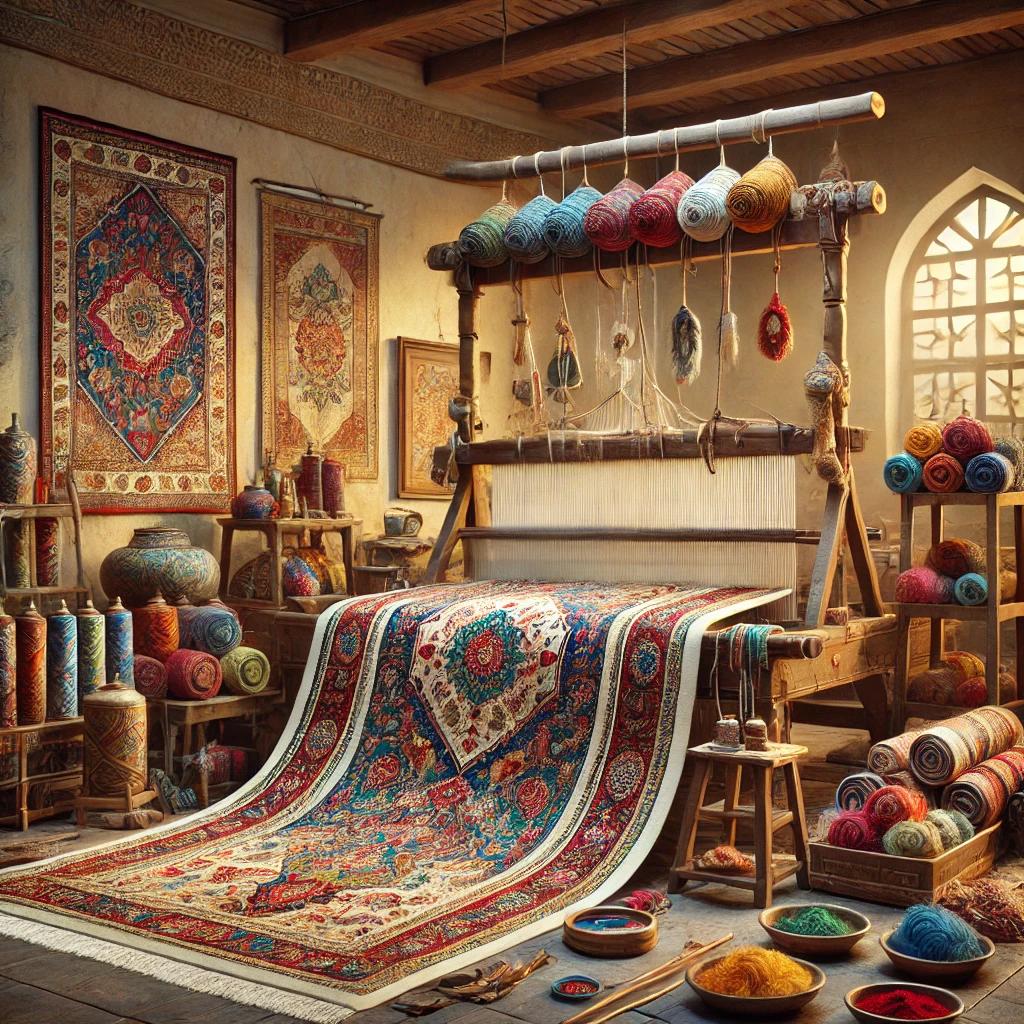
Turkish Rugs History: A Deep Dive into an Intricate Tradition
Estimated reading time: 8 minutes
Key Takeaways
- Turkish rugs are distinct from Persian rugs, showcasing unique geometric patterns.
- They have a rich history that intertwines with the cultures of various ancient civilizations.
- Traditional techniques in weaving and materials contribute to their durability and aesthetic appeal.
- Turkish vintage rugs hold significant cultural value and are treasured for their craftsmanship.
- Rugs play a crucial role in Turkish traditions, from daily life to ceremonial uses.
Table of contents
The history of Turkish rugs reveals a rich tapestry woven from both artistry and culture. When exploring the world of oriental rugs, it’s essential to delve into the unique non-Persian origins that have shaped designs and techniques over centuries. Understanding Turkish rugs allows us to appreciate their artistic lineage and cultural significance, distinct from the renowned Persian rug traditions. (source) In this blog post, we will guide you through the evolution, cultural impact, and variety of Turkish and oriental rugs.
Historical Background of Oriental Rugs
**Oriental Rugs History** is a term that encapsulates the collective tradition of pile-woven textiles from regions including Central Asia, Persia, and especially Anatolia, now modern-day Turkey. These textiles have played a significant role in the prestigious textile traditions of the world.
When comparing Persian rugs to Turkish rugs, the differences are apparent. Persian rugs are celebrated for their intricate floral patterns and rich historical roots. In contrast, Turkish rugs are recognized for their geometric motifs and practical uses, often created to serve the needs of nomadic and settled communities in Anatolia.
Timeline of Key Historical Periods
- Neolithic Era (~7000-6000 BCE): The earliest evidence of weaving in Anatolia suggests that the development of textile art began during this time. These early patterns set the groundwork for future rug-making traditions. (source)
- Hittite Period (~1600-1200 BCE): Historical references to textiles appear in ancient writings, indicating that woven goods were significant, possibly used in trade and ceremonial functions.
- Arrival of Turkic Tribes (11th century): The introduction of the pile rug technique from Central Asia revolutionized Turkish weaving, bringing a new dimension to rug-making. (source)
- Seljuk Period (11th-13th centuries): This era witnessed the creation of the first known Turkish rugs, characterized by bold geometric patterns that would influence future designs.
- Ottoman Empire (14th-20th centuries): Opulent designs flourished during this period, with intricate carpets becoming popular among the affluent classes and reflecting the empire’s rich cultural heritage. (source)
Origins and Evolution of Turkish Rugs
The rug in Turkish culture encompasses a journey from functionality to a reflection of status and identity. Initially utilized by nomadic tribes for practical purposes, rugs became a symbol of cultural identity and prestige as tribes settled and established communities.
The evolution of designs illustrates a transformation marked by unique geometric patterns, floral motifs, and symbolic representations. Certain motifs can be traced back through history, highlighting influences from ancient civilizations like the Hittites, Seljuks, and Ottomans.
- Hittites introduced various ornamental elements.
- Seljuks emphasized geometric patterns suitable for their religious and ceremonial contexts.
- Ottomans infused elaborate designs reflecting royal favor and aesthetics.
These characteristics have made Turkish vintage rugs not just functional pieces of art but representations of a shared history.
Traditional Techniques and Materials
The craftsmanship of Turkish rugs is world-renowned, primarily due to the traditional techniques employed in their creation.
Weaving Techniques
- Double Knot (Ghiordes Knot): This technique is crucial, providing not only durability but also a basis for the intricate designs that characterize Turkish rugs. The skill in using this knot ensures each piece can last for generations. (source)
Common Materials
- Wool: Predominantly used due to its availability and durability.
- Cotton and Silk: Occasionally used for added texture and luxury.
- Natural Dyes: Sourced from plants and insects, these dyes produce vibrant colors, and this method showcases the commitment to traditional craftsmanship. (source)
Regional Variations
- Konya: Known for detailed geometric designs.
- Hereke: Famous for finer weaving techniques and silk production.
- Oushak: Recognized for its large-scale patterns and softer color palettes.
These regions outline the diverse characteristics that contribute to the beauty of Turkish rugs, often marked by local traditions and inspirations.
Turkish Vintage Rugs
Turkish vintage rugs are defined as those that possess a history of over 30 years, characterized by the original hand-made production techniques that predate industrial methods. (source)
Distinguishing Characteristics
- Fading: Many vintage rugs have a beautiful patina that reflects their age.
- Hand-Cut Fringes: These details showcase the artisan’s dedication to craftsmanship.
- Intricate Motifs: Traditional patterns like medallions and prayer niches carry deeper cultural meanings and historical significance.
For instance, prayer niche patterns found in Konya rugs symbolize religious faith and are cherished for their intricate beauty. The motifs, colors, and textures tell stories of the past, making Turkish vintage rugs valuable both culturally and aesthetically. (source)
Cultural Significance of Turkish Rugs
Rugs hold a vital place in Turkish culture, integrating into daily life as well as significant life events.
Functional and Ceremonial Uses
- Weddings: Rugs are often used in ceremonial activities, symbolizing wealth and social status.
- Religious Practices: They serve as a foundation for Islamic prayer and gatherings.
Symbolism Behind Motifs
- Protection: Elements like the “elibelinde” motif are believed to guard against evil.
- Faith: Many colors and patterns reflect beliefs and traditions.
These motifs not only enhance the visual appeal of the rugs but also embed deeper meanings that reflect cultural values.
Influence on Art and Design
The stunning designs of Turkish rugs have influenced not only local artists but also European and global design trends. From the Renaissance period’s artistic expressions to modern fashion, the impact of Turkish rug art is far-reaching.
Modern Perspectives and Reviews
In today’s context, Turkish rugs continue evolving with a blend of traditional techniques and contemporary trends.
Current Trends
There is a revival of traditional motifs, alongside environmentally friendly practices in production.
Insights from Oriental Rug Review Sources
Reviews of contemporary Turkish rugs often highlight their craftsmanship, durability, and the cultural narratives they encompass. Consumers are encouraged to consider:
- Knot Density: A higher density usually indicates better quality. (source)
- Material Quality: Opt for rugs made with natural fibers.
These factors greatly affect the longevity and value of rugs, especially when looking into vintage pieces. (source)
Conclusion
The fascinating Turkish rugs history reflects an artistic legacy deeply rooted in Anatolia’s rich past and shaped by various empires over the centuries. By understanding and valuing the unique contributions of Turkish rugs within the broader context of oriental rug traditions, we can appreciate their beauty and significance. Investing in these cultural artifacts not only honors our rich history but also adds timeless pieces of art to our homes.
Additional Resources
For further exploration of Turkish and oriental rug history, here are some suggested resources:
- Books: “Oriental Rugs: A Comprehensive Guide” – a detailed exploration of rug-making traditions and techniques.
- Websites:
- Ephesus Handcrafts – for insights into the origins of Turkish rugs.
- Biev – for extensive historical background and modern applications.
- Paykoc Imports – for reviews and purchasing tips including vintage options.
Embrace the beauty and history of Turkish rugs, and let their stories add depth and character to your surroundings.


